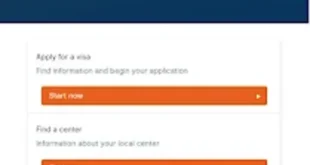Gen Z and the Digital Landscape: Navigating Cyber Threats in a Hyperconnected World
Born and raised in an era of rapid technological advancement, Generation Z is the most digitally fluent generation to date. From an early age, they have been shaping and redefining the digital landscape, leaving behind traces that often go unnoticed until it’s too late. While their online presence is impressive, it also makes them vulnerable to evolving cyber threats.
Kaspersky’s new game, “Case 404,” highlights how cybercriminals are exploiting the online habits of Gen Z, offering practical tips to build digital resilience.
Oversharing and the Digital Footprint
For Gen Z, sharing life moments online is second nature. Platforms like Instagram, TikTok, and Snapchat are filled with geotagged selfies, daily updates, and personal stories. However, this constant sharing creates an extensive digital footprint that can be exploited by cybercriminals.
Oversharing can inadvertently reveal sensitive details, such as home addresses or routines that make users predictable. Even seemingly harmless content, like a photo of a partner or pet, can provide clues for password recovery questions. This behavior increases the risk of identity theft and social engineering attacks.
The Fear of Missing Out (FOMO)
The Fear of Missing Out (FOMO) is a powerful driver for Gen Z, fueled by social media updates about product launches, concerts, and events. Seeing peers attend events, acquire new products, or achieve milestones can lead to feelings of inadequacy or exclusion.
Cybercriminals exploit this fear by creating clickbait phishing schemes, leading users to malicious sites that steal login credentials or distribute malware. Fake event tickets, pre-order scams, and “leaked” insider information are just some of the tactics used to manipulate this anxiety.
Nostalgia and Retro Culture
Gen Z’s fascination with early 2000s culture, from Y2K aesthetics to childhood games, has revived interest in retro titles like The Sims 2, Barbie Fashion Designer, and Bratz Rock Angelz. While these games evoke nostalgia, searching for unofficial downloads often leads users to malware-infested sites.
Cybercriminals target this niche interest by embedding malicious software into counterfeit game files. What seems like a trip down memory lane could result in compromised devices or stolen data.
Fast Fashion and Online Shopping
Gen Z loves expressive clothes and has an ever-changing style. Their trend-chasing habits are supported by fast-fashion retailers supplying accessible ways to switch it up. For instance, Chinese fast-fashion giant Shein adds 6,000 new products to its website per day.
Fast fashion is more than just a shopping preference—it’s a lifestyle. However, the allure of these brands comes with a dark side. Fake shopping websites, hoax promocodes, and phishing ads capitalize on their popularity, using convincing imitations to lure users into entering their sensitive details.
iDisorder and Mental Health
Gen Z faces a phenomenon called iDisorder, where the brain’s ability to process information changes due to overexposure to technology. This obsession can lead to psychological, physical, and social disorders, including depression and anxiety.
Public research shows that one in three 18- to 24-year-olds now report symptoms indicating they have experienced such mental health problems. To cope, many turn to digital tools like teletherapy platforms and mental health trackers.
However, these platforms store highly sensitive personal information, including emotional states, therapy notes, and user routines. If breached, this data could be exploited for blackmailing or phishing.
Staying Secure in a Digital World
“Trends may evolve rapidly, but the underlying cyberthreats remain constant. Whether it’s leveraging Gen Z’s love for online shopping, capitalizing on the urgency created by FOMO, or targeting the growing use of mental health apps, attackers are quick to turn popular behaviors into opportunities for phishing, scams, and data breaches,” comments Anna Larkina, privacy expert at Kaspersky.
To stay safe, Gen Z should verify links and websites before engaging, use strong, unique passwords, and enable two-factor authentication for an extra layer of security. Be mindful of what you share online—and most importantly, remember that staying informed is your best defense.
Cybersecurity isn’t just about responding to threats; it’s about empowering yourself to navigate the digital world confidently and safely.
 Info Malang Raya Its All About World News
Info Malang Raya Its All About World News




